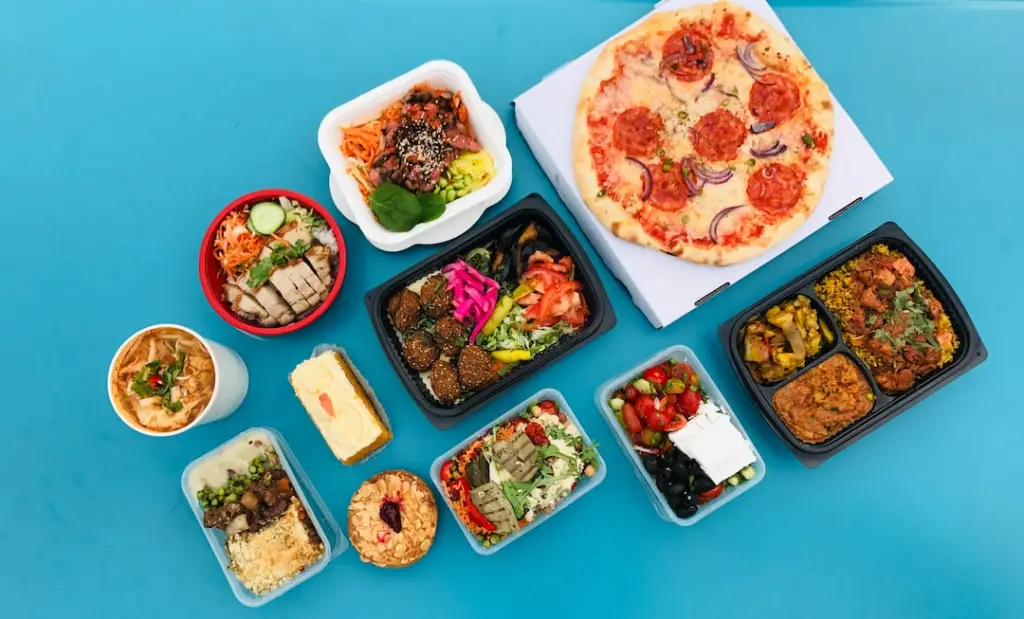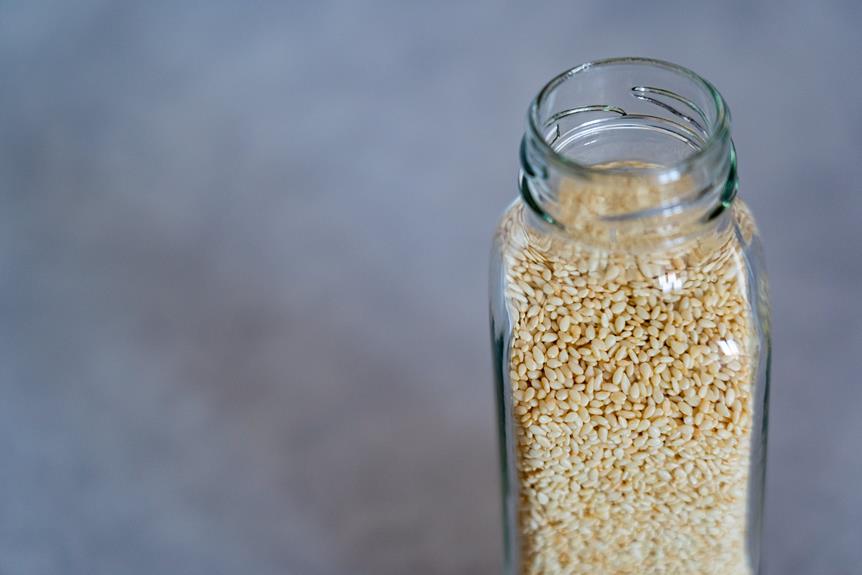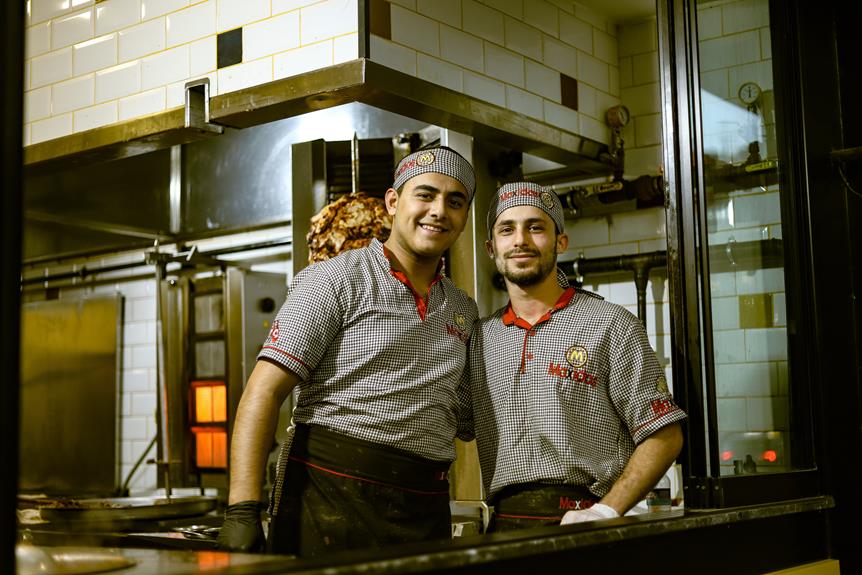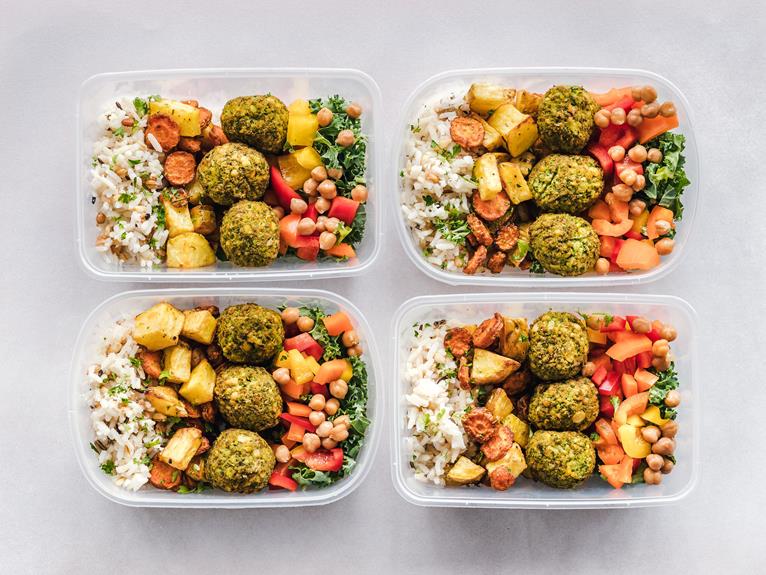With the demands of work, family, and personal commitments, it’s no wonder that many individuals struggle to find the time to plan and prepare meals during the week. Fortunately, meal planning offers a practical solution for busy individuals looking to streamline their daily routines.
By mapping out meals in advance, people can save time, minimize food waste, and make healthier choices, ultimately leading to a more balanced and stress-free week.
Benefits of Meal Planning
Meal planning offers many benefits, making it a valuable tool for those with busy schedules. By incorporating healthy options into your meal planning, you can enjoy several advantages that not only support your well-being but also make you feel part of a community committed to healthy living.
One of the main benefits of meal planning is ensuring that you consume nutritious meals regularly. By consciously selecting and preparing your meals in advance, you can make sure to include a variety of fruits, vegetables, lean proteins, and whole grains in your diet.
This not only provides your body with essential nutrients but also helps maintain a healthy weight and reduces the risk of chronic diseases.
Meal planning also saves you time and money. With a clear plan, you can streamline your grocery shopping, buy ingredients in bulk, and make the most of your budget.
Incorporating healthy options into your meal planning allows you to experiment with new recipes and flavors. You can try different cuisines, explore new cooking techniques, and discover a world of delicious and nutritious meals.
This not only keeps your meals interesting but also helps you feel like part of a community of food enthusiasts who prioritize health and wellness.

Tips for Efficient Meal Planning
To make meal planning efficient and seamless, follow these tips:
- Start with efficient grocery shopping. Take stock of what you have in your pantry and fridge to avoid buying unnecessary items and save money. Create a list of the ingredients you need for your planned meals and stick to it. This will prevent impulse buys and keep you focused on your meal plan.
- When meal planning for weight loss, prioritize nutritious and balanced meals. Include a variety of fruits, vegetables, lean proteins, and whole grains. Plan your meals and prepare them in batches. This will save you time during the week and prevent you from resorting to unhealthy fast food options.
- Utilize technology to simplify your meal planning process. There are many apps and websites available that can assist you in creating meal plans, generating shopping lists, and providing healthy recipes. These tools can make the process more efficient and enjoyable.
Importance of Batch Cooking
Batch cooking is a practical and efficient method that saves you time by preparing multiple meals in advance. When life gets busy, finding time to cook can be challenging. That’s where batch cooking comes in.
By dedicating a few hours to cooking and prepping meals for the week, you can save valuable time and energy.
The benefits of batch cooking are plentiful. First and foremost, it ensures you have healthy and nutritious meals readily available, reducing the urge to order takeout or rely on unhealthy convenience foods.
It allows you to maximize your ingredients, minimizing waste and saving money. Moreover, batch cooking promotes portion control as you can divide the meals into individual servings, facilitating healthier choices.
Not only does it save you time during the week, but it also helps you feel more organized and in control of your meals. If you’re looking for a time-saving meal prep strategy that will make your busy week a little easier, give batch cooking a try. You’ll be amazed at the amount of time and stress it can save you.
How to Create a Weekly Meal Schedule
When planning your meals for the week, it’s important to stay organized. Creating a weekly meal schedule can help you save time and reduce stress.
To create a weekly meal schedule, start by coming up with meal ideas for the week. Consider your family’s preferences, dietary restrictions, and any special occasions or events that may require a different meal plan.
Once you have your meal ideas, make a grocery list by writing down all the ingredients you’ll need. This will help you stay organized while shopping and ensure you don’t forget anything. Next, decide which days you’ll prepare each meal and write it down on a table like the one below:
| Day | Breakfast | Lunch | Dinner |
|---|---|---|---|
| Monday | |||
| Tuesday | |||
| Wednesday |
Quick and Easy Meal Ideas
If you want quick and easy meal ideas, here are some simple options to consider. These recipes will save you time and effort in the kitchen, allowing you to enjoy a delicious meal without complicated cooking techniques.
Here are four meal-planning tips to help you create quick and easy meals that will satisfy your cravings:
- One-Pot Pasta: Make a tasty pasta dish in just one pot by cooking the pasta and sauce together. This saves time on cleaning up and allows the flavors to meld together for a delicious, one-pot wonder.
- Sheet Pan Dinners: Create a complete meal on a single sheet pan by combining protein, vegetables, and seasonings. Simply toss everything together, pop it in the oven, and let it cook while you take care of other tasks.
- 5-Ingredient Meals: Keep it simple with meals that require just five ingredients or less. With a few pantry staples and fresh produce, you can create flavorful meals in no time.
- Leftover Remix: Transform leftovers into a completely new dish. For example, you can turn leftover chicken into a delicious salad or use it as a filling for tacos.
These tips will help you save time and simplify your meal preparation. Enjoy your quick and easy meals!
Incorporating Healthy Options Into Meal Planning
When it comes to meal planning, it’s important to include healthier choices. But incorporating healthy options doesn’t have to be complicated or boring.
One simple way to make your meals healthier is by swapping out ingredients. Instead of using refined grains like white rice or pasta, opt for whole grains such as quinoa or whole wheat pasta. These options provide more fiber and nutrients, keeping you feeling fuller for longer.
You can also try using lean ground turkey or chicken instead of regular ground beef. These options are lower in saturated fat and still add plenty of flavor to your dishes.
Another way to make your meals healthier is by using different cooking methods. Instead of frying your food, try baking, grilling, or steaming. These methods require less oil and can help reduce the calorie content of your meals. Experiment with different herbs and spices to add flavor without relying on salt or unhealthy sauces.
Incorporating healthy options into your meal planning doesn’t mean sacrificing taste or enjoyment. By making creative substitutions and trying different cooking methods, you can create meals that are both nutritious and delicious.
Budget-Friendly Meal Planning Strategies
Meal planning on a budget doesn’t have to be complicated. By using cost-effective strategies, you can stretch your budget while still enjoying delicious and nutritious meals. Here are four simple tips to help you stay within your budget:
- Plan meals with affordable ingredients: Look for recipes that use budget-friendly ingredients like beans, lentils, and inexpensive cuts of meat. Many websites and cookbooks have sections dedicated to budget-friendly meals, so take advantage of those resources.
- Make a grocery list and stick to it: Before heading to the store, create a list of the ingredients you need for your planned meals. Stick to the list and resist the temptation to make impulse purchases that can quickly add up. Shopping with a list helps you stay focused and avoid overspending.
- Buy in bulk and freeze: Take advantage of sales and discounts by purchasing non-perishable items in bulk. You can also freeze leftovers or batch-cooked meals for convenient and budget-friendly options on busy days.
- Cook in larger quantities and meal prep: Cooking in larger quantities not only saves time but also money. Prepare meals in advance and portion them into containers for easy grab-and-go options throughout the week. This eliminates the need for expensive takeout meals when you’re pressed for time.
Meal Prepping for a Busy Week
Simplify your busy week by meal prepping in advance. Meal prepping is a great way to save time and ensure you have healthy and delicious meals ready when you need them. By setting aside time each week to plan and prepare your meals, you can avoid the stress of last-minute cooking and have more time for yourself and your loved ones.
To get started with meal prepping, here are some helpful tips and strategies:
- Plan your meals: Use a meal planning app or template to organize your meals for the week. This saves you time and makes grocery shopping more efficient.
- Cook in bulk: Prepare large batches of proteins, grains, and vegetables that can be used in multiple meals throughout the week. This saves time and ensures you always have healthy ingredients on hand.
- Use freezer-friendly containers: Invest in containers that are safe for the freezer. These make it easier to portion and freeze meals for future use.
Meal prepping can make your busy week much easier and less stressful. Give it a try and see the difference it makes in your life!
Making the Most of Leftovers
If you’ve successfully meal-prepped for a busy week, it’s time to make the most of your leftovers. Don’t let those extra portions go to waste! With a little creativity, you can transform your leftovers into tasty new meals. Here are four ideas to help you maximize your leftovers and create delicious dishes:
- Leftover Stir-Fry: Take those extra veggies, proteins, and grains from previous meals and stir-fry them with soy sauce, garlic, and ginger. Add a splash of sesame oil for extra flavor. It’s an easy way to create a new meal with minimal effort.
- Leftover Pizza Quesadillas: Instead of reheating those leftover pizza slices in the microwave, why not turn them into quesadillas? Simply place a slice between two tortillas, add cheese and any toppings you like, then cook it on the stovetop until the cheese is melted and the tortillas are crispy.
- Leftover Soup: Combine your leftover vegetables, proteins, and grains with broth to create a hearty and flavorful soup. Add spices and herbs to enhance the taste. It’s a comforting meal that will warm you up on a busy day.
- Leftover Salad Bowls: Use any remaining proteins, grains, and vegetables to create a delicious salad bowl. Add fresh greens, a sprinkle of cheese, and a flavorful dressing. It’s a nutritious and filling option that will keep you energized throughout the day.
With these creative leftover recipes, you can make the most of your food and reduce waste while enjoying tasty and satisfying meals.
Meal Planning for Picky Eaters
If you have picky eaters in your household, meal planning can be more challenging. It’s important to find meals that everyone will enjoy, while also accommodating any food restrictions or preferences. Here are some ideas to help you navigate this tricky terrain.
Involve your picky eaters in the meal-planning process. Ask them to suggest their favorite foods or flavors, and try to incorporate those into the meals you plan. This will make them feel included and more likely to try new things.
Think about ways to modify recipes to meet their preferences. If your picky eaters don’t like certain vegetables, try sneaking them into dishes by pureeing or chopping them finely. This way, they’ll get the nutritional benefits without the taste they dislike.
Dealing with food restrictions can be another challenge. If your picky eaters have allergies or dietary restrictions, make sure to plan meals that are safe for them to eat. Look for alternative ingredients or recipes that can easily be adapted to their needs.
Finally, don’t be afraid to get creative with the presentation. Sometimes, the way a meal is presented can make it more appealing to picky eaters. Use fun shapes or colors to make the meal visually appealing and enticing.
Time-Saving Kitchen Hacks for Meal Planning
To save time in the kitchen while meal planning, try these efficient tips:
- Prepare ingredients ahead of time: Take some time on your day off or over the weekend to chop and prep ingredients for the week. This way, when it’s time to cook, everything is already prepared, saving you precious minutes.
- Cook in larger batches: Instead of cooking a meal every single night, consider making larger portions and dividing them into individual servings. You can then store these servings in the fridge or freezer, making it easy to heat them whenever you’re ready to eat.
- Plan meals around common ingredients: Simplify your grocery shopping by choosing meals that share similar ingredients. For example, if you’re making a stir-fry one night, use some of the same vegetables in a salad the next day. This way, you can minimize waste and save time in the kitchen.
- Utilize grocery delivery or pickup services: Take advantage of technology and have your groceries delivered or ready for pickup. This saves you the time and hassle of navigating crowded grocery stores and waiting in long checkout lines.
Organizing Your Pantry and Fridge for Meal Planning
Simplify your meal planning process and easily find ingredients by organizing your pantry and fridge efficiently. A well-organized pantry and fridge can save you time and reduce stress when planning meals.
Start by decluttering your pantry and getting rid of any expired or unused items. Group similar items together, such as canned goods, grains, and snacks. Use clear containers or bins to store smaller items like spices and condiments, making them easier to find. Label each container to avoid confusion and maintain order.
For your fridge, regularly clean out any expired or spoiled food to keep it fresh and organized. Keep fruits and vegetables in separate drawers to prevent quick spoiling. Arrange items in a way that makes sense to you, like grouping dairy products and placing leftovers at eye level for easy access. Utilize clear containers to store items like deli meats and cheeses, making them visible and easy to grab.
Meal Planning Apps and Tools to Simplify the Process
Meal planning can be made easier with the help of meal-planning apps and tools. These resources simplify the process and help you stay organized throughout the week. Here are four meal-planning apps and tools that can streamline your meal-planning process:
- Read meal planning app reviews: There are many meal planning apps available, and reading reviews can help you find the one that suits your needs. Look for apps with positive reviews and features like recipe suggestions, grocery list creation, and customizable meal plans.
- Use meal planning templates: Meal planning templates save you time and effort. These templates provide a structured format for planning your meals, allowing you to easily map out your breakfasts, lunches, dinners, and snacks for the week. You can find printable templates online or use a digital template on your computer or smartphone.
- Explore recipe databases: Many meal-planning apps and websites have extensive recipe databases that inspire. These databases often include filters for dietary preferences and restrictions, making it easier to find recipes that fit your needs. Exploring different recipes diversifies your meals and keeps your menu interesting.
- Use grocery list generators: Creating a grocery list can be time-consuming, but many meal planning apps and tools offer grocery list generators. These generators automatically populate your list based on the recipes and ingredients you’ve selected. This feature saves you from having to manually write down each item and ensures you don’t forget anything when you go shopping.
Conclusion
Meal planning is a vital tool to help us stay organized and efficient during busy weeks. Just like a well-structured schedule, a thoughtfully planned meal schedule brings order and simplicity to our lives.
It acts as the conductor of an orchestra, harmonizing the chaos and creating a symphony of delicious and nourishing meals. Embrace the power of meal planning as your guiding light in the culinary journey of life.
Let’s make meal planning a priority and enjoy the benefits it brings.









